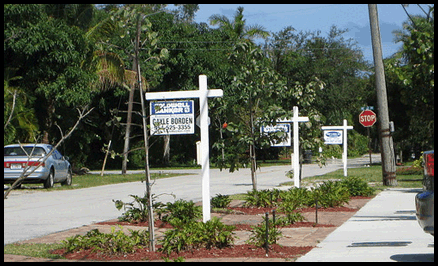It is a confusing time for cities and the people who work for them. On the one hand, the recent election showed a groundswell of support for new investment in infrastructure. Americans passed $75 billion in funding for public transportation, from a bullet train between San Francisco and Los Angeles to an elevated commuter rail system in Honolulu. Voters also overwhelmingly elected a presidential candidate that is promising to invest attention (and hopefully, dollars) in cities through the new Office of Urban Policy. He's also supported creating a National Infrastructure Reinvestment Bank to the tune of $60 billion over the next 10 years.

At the same time, cities are facing mounting fiscal problems as the mortgage crisis hits home. While greater investment appears just over the horizon, cities are making tough decisions in the here and now about where to cut services.
"Our community and region fares pretty well usually, but we are feeling the effects," says Jeffery G. Ulma, Planning Director of the Town of Cary, NC, a well-off community in The Triangle. Ulma says that his town is waiting on filling positions, cutting back on travel and training, and putting some projects that use consultants on hold. "We'll be optimistic, but we're hunkering down," Says Ulma. "We still have lots of inquiries from developers, and we're still exploring those opportunities. My calendar is no less full than a year ago."
But other communities aren't faring as well. "We are now cutting into what we believe is the bone," says Atlanta Mayor Shirley Franklin in the Atlanta Journal-Constitution. The city is cutting 222 jobs and closing a dozen recreational centers. Last year Atlanta was already feeling the hit and closed a handful of underattended schools to make up the shortfall.
So how are cities making the tough decisions when they go to cut up the budget?
Cutting Back Services
One approach is to think about it as ‘streamlining'. In a recent column on Citiwire, Neal Peirce writes that the best place to cut back funding is in those areas that use the most money. Sounds good, but for most cities, those areas are public safety services like police and firefighters – not the most politically expedient budgets to trim. But don't be so fast to put the kibosh on those cuts, Peirce argues. By improving the efficiency of these safety operations, he says cities can cut budgets and still maintain high levels of service.
And though it might seem like planners are scapegoating public safety budgets, there's evidence that they may be on to something. When the city of Vallejo, California declared bankruptcy this spring, it was largely due to ballooning salaries and benefits for public safety employees like cops and firefighters. Nearly 75 percent of the city's general fund went towards these services, and the rising costs of providing pensions for retirees. These expenses rapidly became too much for the city to handle, according to a recent article in Governing Magazine. Bankruptcy was the unfortunate solution for Vallejo, and many other cities in similar straits are looking at Vallejo's experience to understand what not to do.

A Blue Christmas
Cutbacks are even effecting Christmas, as the usual holiday festivities face the chopping block. In an article in The Wall St. Journal, several cities admitted to turning Scrooge-like this year when it comes to funding holiday festivities and decorations. "People just aren't feeling it -- or can't afford it," said one business owner in Bay City, Michigan about the annual City of Lights display. Mayor Charles M. Brunner looked at the $75k price tag and decided it doesn't make sense given all the other cutbacks the city is facing. Many Bay City residents aren't pleased with the decision. "'Complain' isn't the word," says Brunner. "People are sad." Other cities like Brunswick, Ohio, St. George, Utah and Hartford, Connecticut are tightening Santa's belt, going so far as to cut staff holiday parties at City Hall.
Thinking Differently
Some groups, however, see the economic downturn as an opportunity for cities to try things differently. In a recent op-ed on the Project for Public Spaces website, Philip Myrick argues that "keeping and attracting people is the most important strategy in this new economic landscape." Myrick poses that the lesson of the current economic downturn is a need to focus on the local by investing strongly in placemaking, creating lively downtowns, and pride in local character. "In a down economy, it is tempting to cut back on these planning ideas," says Myrick. "But disregarding these principles in the name of saving money can create a downward spiral that causes a local economy to lose its competitive edge."
Regardless of approach, it appears the divide between hope and reality may continue for some time, following the separate paths of the economic crisis and the mortgage crisis. While funding and political will may cause the market to rally and the economy to improve, it is likely depressed housing prices will keep property taxes low and city coffers hurting. The Urban Land Institute recently released an opinion piece predicting that the new home market could pick back up by 2010, followed by a rally in the resale market in 2011. Until that time, cities may be forced to make some tough choices.
You can also listen to a podcast version of this analysis in the player below, or download it.
Tim Halbur is managing editor of Planetizen. Nate Berg is assistant editor of Planetizen.

Planetizen Federal Action Tracker
A weekly monitor of how Trump’s orders and actions are impacting planners and planning in America.

Chicago’s Ghost Rails
Just beneath the surface of the modern city lie the remnants of its expansive early 20th-century streetcar system.

Amtrak Cutting Jobs, Funding to High-Speed Rail
The agency plans to cut 10 percent of its workforce and has confirmed it will not fund new high-speed rail projects.

Ohio Forces Data Centers to Prepay for Power
Utilities are calling on states to hold data center operators responsible for new energy demands to prevent leaving consumers on the hook for their bills.

MARTA CEO Steps Down Amid Citizenship Concerns
MARTA’s board announced Thursday that its chief, who is from Canada, is resigning due to questions about his immigration status.

Silicon Valley ‘Bike Superhighway’ Awarded $14M State Grant
A Caltrans grant brings the 10-mile Central Bikeway project connecting Santa Clara and East San Jose closer to fruition.
Urban Design for Planners 1: Software Tools
This six-course series explores essential urban design concepts using open source software and equips planners with the tools they need to participate fully in the urban design process.
Planning for Universal Design
Learn the tools for implementing Universal Design in planning regulations.
Caltrans
City of Fort Worth
Mpact (founded as Rail~Volution)
City of Camden Redevelopment Agency
City of Astoria
City of Portland
City of Laramie




























